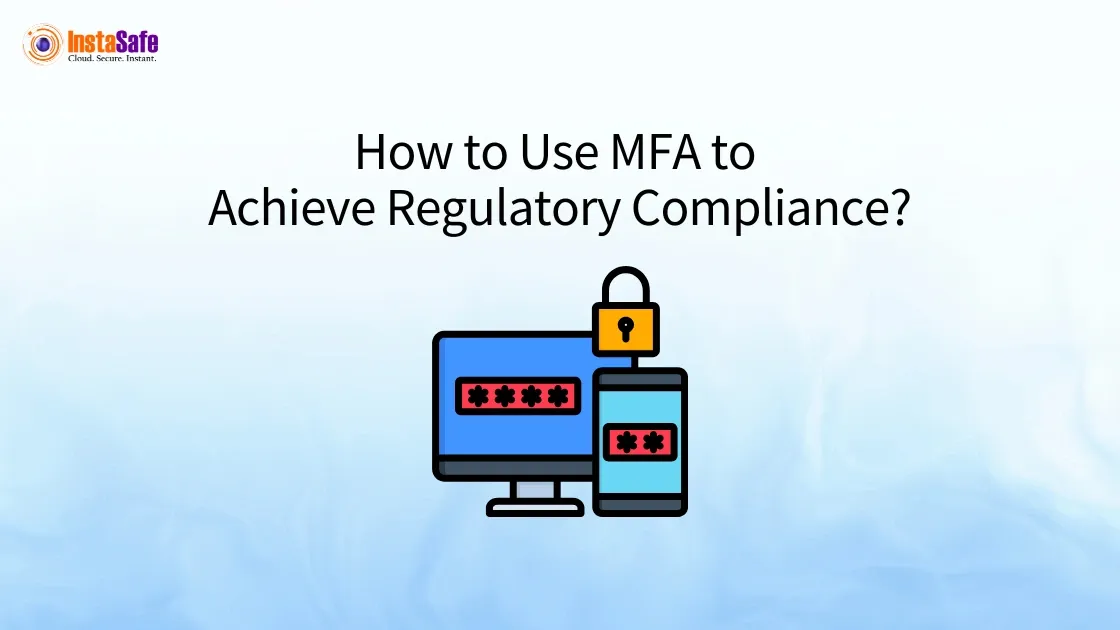How to Use MFA to Achieve Regulatory Compliance?

Passwords alone are not enough to protect your organisation's sensitive data. With cyber attacks growing more sophisticated every day, regulations require organisations to use stronger protection methods. Multi-factor authentication has become an important security tool for businesses aiming to achieve compliance while defending against unauthorised access.
This blog explains how MFA compliance helps meet key regulatory requirements, the specific benefits it offers and practical steps to implement this critical security measure.
What is MFA and Why Does it Matter?
MFA or Multi-Factor Authentication requires users to confirm their identity in various ways before accessing systems or data. This adds multiple layers of security. Unlike traditional passwords, MFA compliance requires at least two verification factors:
- Something you know (for example, password, PIN, etc.)
- Something you have (for example, OTP, authenticator app, etc.)
- Something you are (for example, fingerprint, face recognition, etc.)
MFA compliance has become essential for businesses that handle sensitive information. When hackers steal passwords in data breaches, MFA prevents them from using those passwords to break into your systems. This simple but powerful tool helps organisations meet various security regulations while protecting valuable data.
How to Implement MFA for Regulatory Compliance?
Step 1: Identify Your Compliance Requirements
Depending on your sector and the types of data you manage, determine the regulations that are applicable to your company. There can be specific multi-factor authentication regulation requirements based on your niche and industry.
Step 2: Choose the Right MFA Solution
Select a perfect solution that fits your needs and compliance requirements. Options include:
- Mobile apps (Google Authenticator, Microsoft Authenticator)
- Hardware tokens (YubiKey)
- SMS codes (less secure but better than passwords alone)
- Biometric verification
Step 3: Implement MFA Where It Matters Most
Focus first on protecting your most sensitive systems:
- Remote access connections
- Administrator accounts
- Financial systems
- Customer/patient data access
- Cloud service logins
Step 4: Train Your Team
Ensure all users understand how to use the new secure access control methods. Explain why MFA is important both for compliance and for protecting the organisation.
Step 5: Document Your MFA Implementation
Maintain detailed records of your MFA compliance measures for regulatory audits. Documentation should include:
- Which systems use MFA
- Which verification methods are you using
- How you are enforcing MFA policies
- Training provided to users
Overcoming Common MFA Implementation Challenges
Legacy System Integration
Older systems may not support modern multi-factor authentication regulation. Here are some solutions:
- Use MFA proxies or gateways
- Implement single sign-on with MFA
- Use adaptive authentication that applies MFA based on risk
User Resistance
Some users may complain about the extra steps required by compliance authentication. Address this by:
- Choosing user-friendly MFA options
- Explaining the importance of MFA for security
- Starting with a pilot group before full deployment
Budget Constraints
MFA implementation can seem expensive, but consider the cost of non-compliance or a data breach. Many affordable cloud-based MFA compliance solutions exist that require minimal upfront investment.
Real-World Example: Healthcare Provider Implements MFA
A medical clinic needs to comply with HIPAA regulations for patient data. They implemented secure access control through MFA:
- They identified all systems containing patient information.
- They implemented MFA using a combination of passwords and authenticator apps.
- They trained staff on using MFA and why it matters.
- They documented their implementation of HIPAA compliance audits.
Result: The clinic successfully passed its compliance audit and prevented unauthorised access attempts that previously might have succeeded with stolen passwords alone.
Key Regulations That Require MFA
Many important industries now require some form of multi-factor authentication regulation to protect sensitive information. These include:
HIPAA (Healthcare)
The Health Insurance Portability and Accountability Act (HIPAA) protects patient health information. While HIPAA does not mention MFA, its Technical Safeguards require "Person or Entity Authentication" to authenticate identity.
MFA compliance provides this verification by requiring multiple proof points before allowing access to patient records.
PCI DSS (Payment Cards)
The Payment Card Industry Data Security Standard (PCI DSS) protects credit card information. It clearly requires multi-factor authentication regulation for remote access to networks handling cardholder data. Businesses that process credit cards must implement MFA or risk losing their ability to handle payments.
GDPR (European Data Protection)
The GDPR forces organisations to secure personal data. While not explicitly requiring MFA, using compliance authentication methods like MFA helps meet GDPR's security requirements.
SOC 2 (Service Organisations)
SOC 2 focuses on how service providers handle customer data. It requires strong, secure access control, including multi-factor authentication, for accessing sensitive systems, especially for remote users and administrators with higher privileges.
ISO 27001 (Information Security)
This international standard recommends multi-factor authentication regulation as a security control for access to information systems, particularly for remote access and privileged accounts.
Benefits of Implementing MFA Compliance
Stronger Security with Simple Implementation
MFA compliance dramatically improves security without requiring complex technology. By adding just one additional verification step, you can block most unauthorised access attempts, even when passwords are compromised.
Meeting Multiple Regulations at Once
Implementing proper compliance authentication through MFA helps satisfy requirements across multiple regulations simultaneously. This efficiency makes MFA a high-value security investment.
Reducing Data Breach Risk
MFA provides solid, secure access control, which dramatically reduces the danger of data breaches that might result in regulatory penalties, legal action and reputational harm.
Qualifying for Cyber Insurance
Many cyber insurance providers now require MFA compliance before they issue or renew policies. Implementing MFA can help you qualify for insurance and potentially reduce your premiums.
Conclusion
MFA compliance is not just about meeting the regulations. It is a complete security practice that protects your organisation from the most common attacks. By implementing multi-factor authentication, you strengthen your security posture while meeting compliance obligations.
With InstaSafe MFA, you can meet regulatory compliance and achieve robust security hassle-free. Our multi-factor authentication solution provides excellent protection against unauthorised access, simplifies compliance with HIPAA, PCI DSS, GDPR and more and remains user-friendly.
